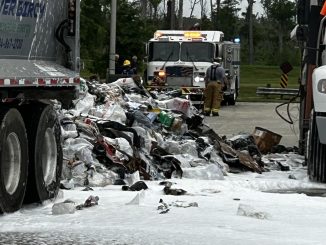
We have all read those stories many times. The professional athlete or new pop idol makes a fortune and in no time spends it all and is worse off than they were before riding the wave of fame. That syndrome is a metaphor to some degree for our state government.
Prior to the two hurricanes in 2005, state generated revenue stood at about $9 billion. The initial adverse impact on Louisiana’s economy forced the Legislature to lop off $900 million in spending after the storms to balance the budget. That was done with few if any state employees losing their jobs and no medical or educational institutions being forced to close. From all indications, there was that much slack in state spending that could be easily accommodated without significant disruptions of services.
As federal assistance and insurance payments poured into Louisiana, state revenues exploded. By May of 2006, the revenue levels were back at pre-storm levels. Revenues continued to climb rapidly, hitting $10.7 billion in May of 2007 and $11.8 billion in May of 2008. In three short years-after a severe economic downturn-state revenues grew by an average of almost a billion dollars a year. Unfortunately, state spending grew at the about the same rate, setting state government up for a fall.
In September of 2008 the financial meltdown hit, impacting every state’s economy and budget. Louisiana was no exception. Economic activity dropped, unemployment rose, and oil went from $147 a barrel before the crash to $50 a barrel after it. State spending should have tapered down with the drop in revenues, but the influx of federal stimulus dollars kept the spending levels artificially high.
By the time the 2011 legislative session arrived, the big news was a projected $1.6 billion dollars revenue shortfall compared to the previous budget. It appeared that the fiscal chickens had come home to roost and that our state government would have to finally trim a significant amount of spending that was added to the state budget when revenues exploded during the 2006-2008 time frame.
But once again, the can was kicked down the road. The projected shortfall was overcome by eliminating inflation adjustments, removing unfilled staff positions, making a relatively small amount of actual cuts, and sweeping hundreds of millions of dollars from statutorily dedicated funds. The fact that not enough budget reductions were made last spring was driven home when the Revenue Estimating Conference met last December and lowered the revenue projection for the current budget which forced about $200 million in mid-year budget cuts.
Perhaps one could argue that the trend is getting better with state finances since the talk in Baton Rouge now centers on a $895 million budget hole as the Legislature prepares to meet and work on the budget for next year.
The Legislature didn’t cut $1.6 billion last year to meet lower revenue estimates and won’t cut $895 million out of the budget this year. More one-time money will be found to keep the spending levels high. The surreal spending levels of 2008 that were based on unrealistically high revenue estimates still dictate budget decisions in Baton Rouge today. Once something is funded in the state budget it is almost considered an entitlement.
The financial crisis of 2008 was the best opportunity Louisiana has had in decades to reform the way state government spends money and to reconfigure state services in ways that adequately fund priority needs but do so in the most efficient fashion possible. The federal stimulus money was a narcotic that temporarily masked the pain of spending money coming from uncertain revenues.
The now routine annual projected revenue shortfalls and angst at budget time are products of state government not taking the opportunity to get it right in the aftermath of the economic downturn of 2008.




Be the first to comment